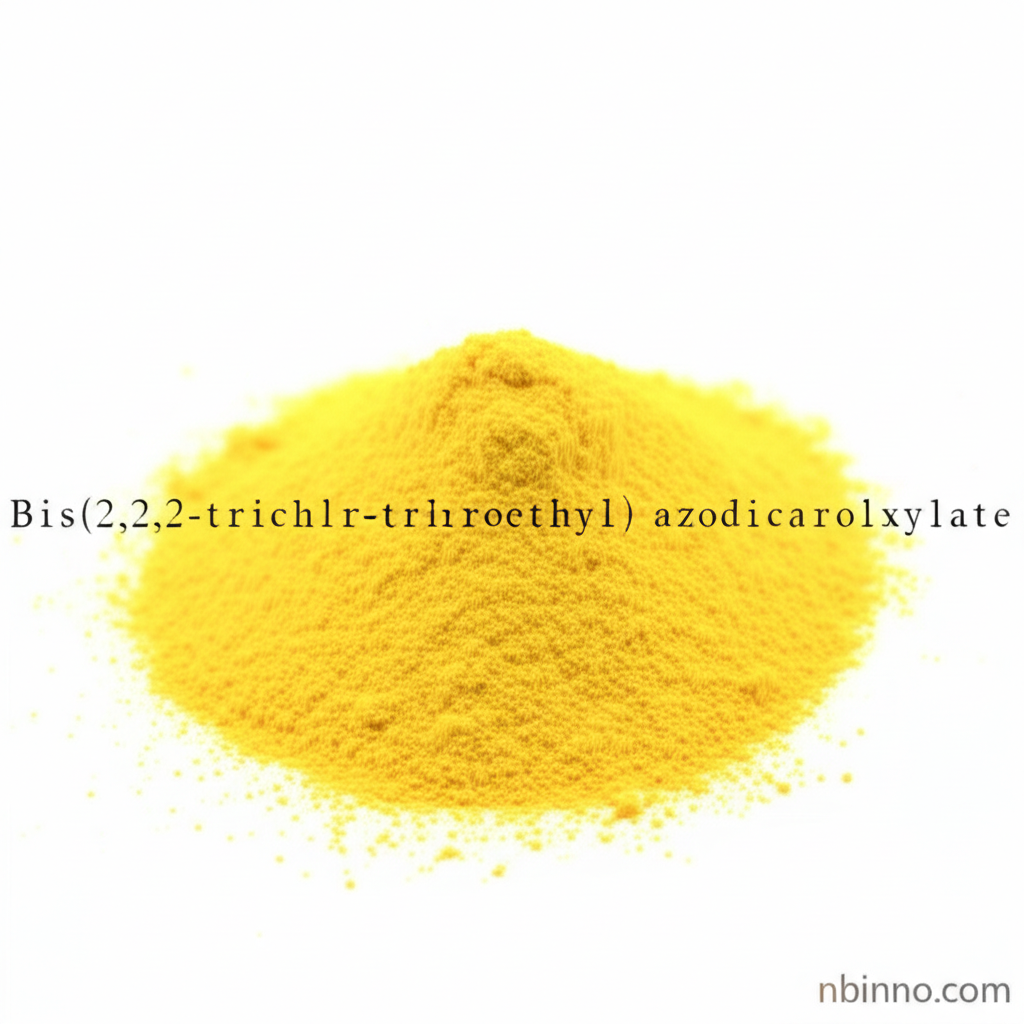Bis(2,2,2-trichloroethyl) Azodicarboxylate: A Versatile Reagent in Organic Synthesis and Material Science
Discover the key applications and properties of this essential chemical in various scientific and industrial fields.
Get a Quote & SampleProduct Core Value

Bis(2,2,2-trichloroethyl) Azodicarboxylate
Bis(2,2,2-trichloroethyl) azodicarboxylate, identified by CAS number 38857-88-4, is a significant chemical compound extensively used in advanced organic synthesis and material development. Its unique chemical structure and reactivity make it a valuable tool for chemists and researchers across various disciplines. This compound plays a crucial role in facilitating complex chemical transformations, contributing to the creation of novel molecules and materials with enhanced properties.
- Leveraging Bis(2,2,2-trichloroethyl) azodicarboxylate synthesis, researchers can produce specialty chemicals with high purity and specific functionalities.
- Explore the diverse Bis(2,2,2-trichloroethyl) azodicarboxylate applications, from pharmaceutical intermediates to advanced polymer components.
- The CAS 38857-88-4 chemical properties, including its stability and reactivity, are critical for its success in demanding synthetic routes.
- As a potent azo compound in organic chemistry, it enables efficient amination reactions, a key step in many synthetic pathways.
Advantages Provided by the Product
Enhanced Synthetic Efficiency
Utilizing this chemical reagent significantly boosts the efficiency of organic synthesis, allowing for more predictable and high-yield reactions. Its role as an amination reagent for organic synthesis is particularly noteworthy.
Material Property Improvement
In material science, it contributes to developing polymers with superior thermal stability and mechanical characteristics, making it a key component for chemicals for polymer production.
Versatile Reactivity
The compound's capability in Diels-Alder cycloadditions and aza-ene reactions broadens its applicability, offering diverse synthetic pathways for complex molecular structures.
Key Applications
Organic Synthesis
As a vital component in organic synthesis, it is employed in various reactions, including amination and cycloadditions, to create complex organic molecules.
Polymer Production
This compound is instrumental in the synthesis of advanced polymers, enhancing their performance attributes such as thermal stability and mechanical strength, aligning with its role in chemicals for polymer production.
Material Science
Its unique properties make it valuable in developing new materials with specialized characteristics for industrial applications.
Pharmaceutical Intermediates
It serves as a critical building block in the synthesis of pharmaceutical compounds, contributing to the development of new drug therapies.
